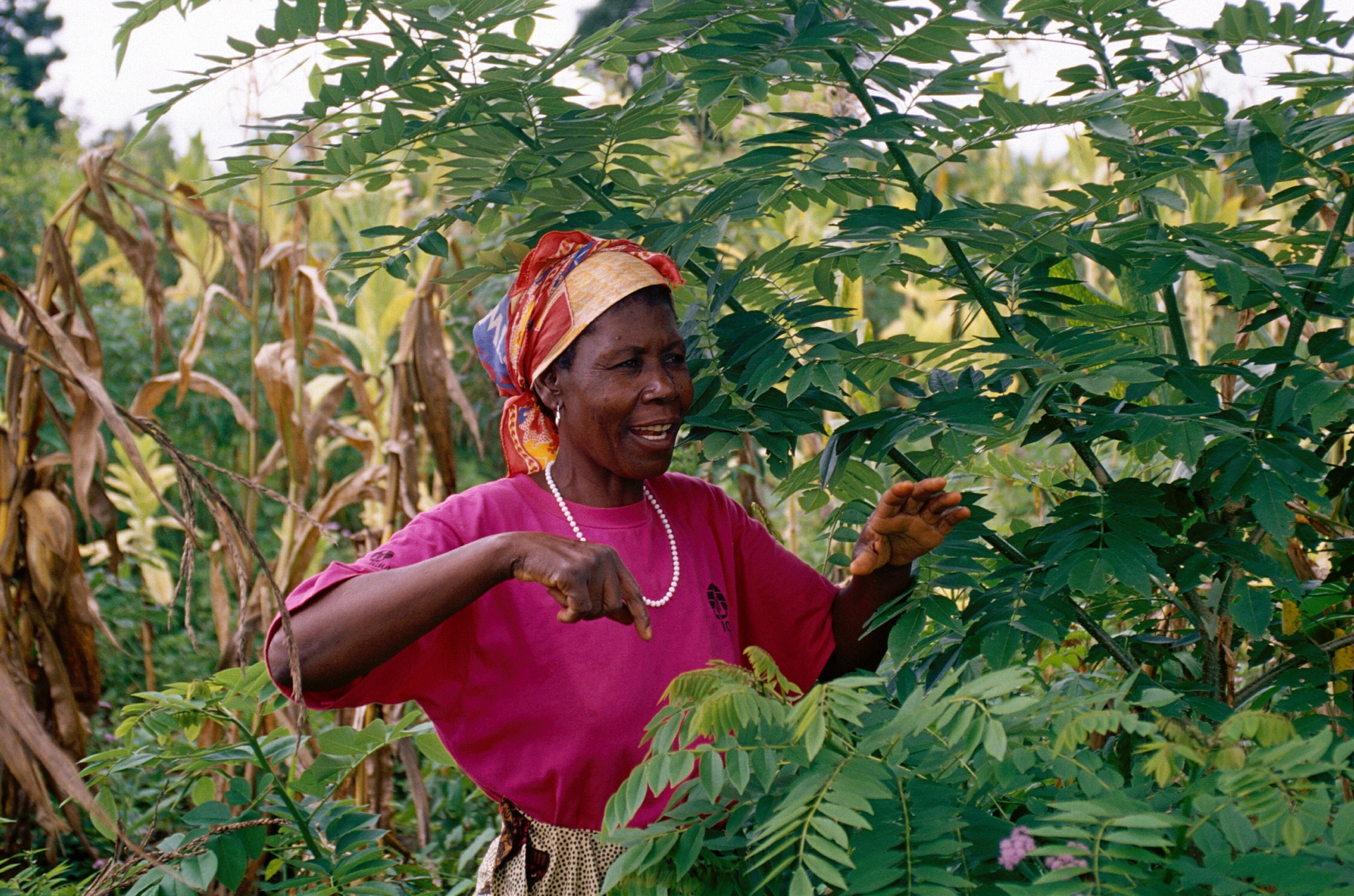To thrive, maize requires phosphorus and nitrogen, large quantities of which have been depleted from African soils, where fertilizer application is the lowest in the world.
The 'fertilizer tree' or gliricidia, a leguminous tree, has the ability to draw nitrogen from the air and insert it into soil, changing it into a form that plants can use. "The trees also restore some amount of phosphorus to the soil," said Gudeta Sileshi, the study's lead author and the Southern Africa representative of the Kenya-based World Agroforestry Centre (ICRAF).
In addition, the leaves shed by gliricidia return organic matter to the soil, increasing its structural stability, erosion resistance and capacity to store water. Three consecutive experiments, begun in 1991 in Malawi and Zambia, showed that when gliricidia was planted in rows between maize plants, maize yields were good year after year.
Help for smallholders
Gudeta, speaking to IRIN from Malawi, said researchers worked with 100 farmers in chronically poor districts like Zomba and Machinga in the drought-prone Southern region.
Most plots in the region are less than a hectare in size; half a hectare requires at least a 1,000 gliricidia trees to produce the required nitrogen, which can last through to the next year. The trees can be cut back from year to year, which makes them go into a dormant state and not compete for nutrients.
For a good yield, farmers can spend more than US$250 per hectare on fertilizers per season.
Gudeta said the Malawian government had already been considering phasing the trees into their agricultural programmes when researchers began their work in Malawi.
Now, with the results of the study, Gudeta said, "we are working with the National Smallholder Farmers' Association in Malawi to scale [use of the tree] up. We hope to reach 500,000 farmers by 2020."
There are about 1.5 million smallholder farmers in Malawi.
Further needs
But there are a few obstacles. One is convincing farmers to be patient with the trees, which take two or three years to grow and start showing results. "So many farmers think it is easier to... apply fertilizers," said Gudeta.
There is also an inadequate supply of the trees' seeds. "But as more and more farmers grow them, we hope to have an adequate supply," he said.
Farmers in many African countries are aware of the beneficial properties of the gliricidia trees and have grown them for years. But long-term studies, including those on different cropping systems, have been virtually nonexistent in sub-Saharan Africa.
"We need well-designed long-term trials that will allow scientific assessments of different cropping systems with a changing climate in Africa," said Legesse Kassa Debusho, one of the study's three co-authors and a senior lecturer at the University of Pretoria. "Such information can guide the exploration of technological alternatives and the development of policies to improve the adaptability and sustainability of cropping systems."
jk/rz
This article was produced by IRIN News while it was part of the United Nations Office for the Coordination of Humanitarian Affairs. Please send queries on copyright or liability to the UN. For more information: https://shop.un.org/rights-permissions





